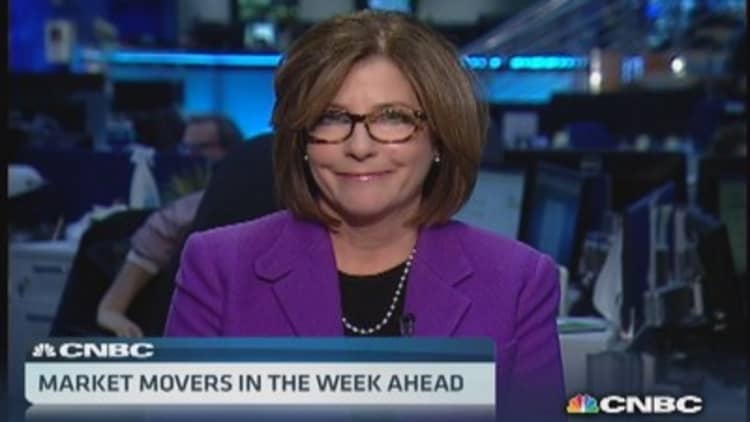President Barack Obama's State of the Union address on Tuesday night will get much of the media attention this week. And the speech does carry some political importance for a president struggling to recover from a disastrous 2013 and push his approval rating back above 50 percent.
But from an economic perspective, the speech bears little significance. Obama will push for an extension of jobless benefits, a hike in the minimum wage and for big employers not to discriminate against the long term unemployed. He also still wants a comprehensive immigration bill.
But Republicans are likely to block much of Obama's agenda. And even if he got a boost in the minimum wage and an unemployment insurance extension, it would not make a large-scale macroeconomic difference. And Obama's pledge to move unilaterally through executive order, which has enraged some Republicans fearful of onerous new EPA regulations, may not amount to much either.
In fact, Obama has been pledging to act unilaterally on jobs initiatives since 2011 to little apparent affect.
(Read more: Obama's risk of going too left in State of the Union)
The far more important event in Washington from an economic perspective takes place Wednesday when the Federal Reserve's Open Markets Committee releases its latest statement on monetary policy, the last with Ben Bernanke as chairman.
The Fed, which last month said it would begin tapering its $85 billion per month in asset purchases by $10 billion per month, now has to contend with a terrible December jobs report and the meltdown in the Turkish lira, Argentine peso and other currencies that led to a big stock market swoon in the U.S. late last week.
Most Fed watchers believe the central bank will dismiss the December jobs report as a statistical fluke impacted by unusually bad weather. And with U.S. markets recovering on Monday, the Fed could easily conclude that there is no reason to alter its plans to withdrawal extraordinary stimulus. U.S. interest rates remain well controlled, with the 10-year Treasury dropping to 2.72 percent on Friday during a flight to safety.
And there is no certainty that emerging market currency weakness is directly linked to fears of a Fed-driven rise in global interest rates. Slowing demand from China could be equally or more to blame.
Still, the fairly sunny global picture that existed when the Fed began the taper—a faster U.S. recovery and a stable Europe—now seems at least a bit darker and less certain. So will the new Fed statement include any further caveats about the reduction in asset purchases?
(Read more: How the Wall Street reformers are winning)
In the December statement, the FOMC said it would "closely monitor incoming information on economic and financial developments" and that "asset purchases are not on a preset course." It seems too soon to alter that course now but it may not be after the next FOMC meeting, which ends on March 19.

That happens to be Janet Yellen's first meeting as chair and first press conference. So while this week's meeting and statement are important, the March meeting is monumental. Yellen will have the difficult task of both introducing herself to financial markets and journalists while explaining the Fed's thinking and plans for navigating its exit from extraordinary stimulus without stalling the economy.
Perhaps the picture will once again be clearer in March following a couple more jobs reports and an end to the current market turbulence.
But then Yellen could also face the dilemma of winding down the quantitative easing program as the jobless rate approaches the Fed's target of 6.5 percent without the underlying economy getting much better.
(Read more: Frustrated Obama's message: I'll go it alone)
Yellen has said she looks at a broad array of data to gauge labor market conditions, including quit rates. But none of those is spelled out by the FOMC the way the unemployment rate is. And the jobless rate hit 6.7 percent in December mostly because people dropped out of the labor force, not because they found jobs.
Yellen will be under pressure from the right to keep pulling out stimulus and return to more normalized monetary policy. But Democrats heading into a 2014 midterm battle they plan to wage on the issue of persistent joblessness and economic inequality will be eager for Yellen to keep the easy money flowing at even the slightest sign of a new slowdown.
So while Obama will capture the spotlight Tuesday night, most of the big economic action this week and for the rest of the year is likely to take place in the cozy confines of the Federal Reserve.
—By Ben White. White is POLITICO's chief economic correspondent and a CNBC contributor. He also authors the daily tip sheet POLITICO Morning Money [politico.com/morningmoney]. Follow him on Twitter @morningmoneyben.


